NCLEX PN FUNDAMENTALS PROCTORED EXAM LATEST VERSION 2025-2026
Document Content and Description Below
1. While the nurse is providing preoperative teaching for a client with peripheral vascular disease who is to have a below-the-knee amputation, the client says. “I hate the idea of being an inva ... lid after they cut off my leg.” The nurse’s most therapeutic response should be: A. “Focusing on using your one good leg will make your recovery easier.” B. “Tell me more about how you are feeling.” C. “We will talk more about this after your surgery.” D. “You are fortunate to have a wife who can take care of you.” 2. Which indicates that a client has achieved the goal of correctly demonstrating deep breathing for an upcoming splenectomy? The client: A. Breathes in through the nose and out through the mouth B. Breathes in through the mouth and out through the nose C. Uses diaphraphragmatic breathing in the lying, sitting, and standing positions. D. Takes a deep breath in through the nose, holds it for seconds, and blows it out through pursed lips 3. Which nursing action is most important in preventing cross-contamination? A. Changing gloves immediately after use B. Standing 2 feet (61cm) from the client C. Speaking minimally when in the room D. Wearing protective coverings 4. The nurse’s best explanation for why the severely neutropenic client is placed in reverse isolation is that reverse isolation helps prevent the spread of organisms: A. To the client from sources outside the client’s environment B. From the client to healthcare personnel, visitors and other clients C. By using special techniques to handle the client’s linens and personal items D. By using special techniques to dispose of contaminated materials 5. Which statement indicated to the nurse that a client has understood the discharge instructions provided after nasal surgery? A. “I should not shower until my packing is removed.” B. “I will take stool softeners and modify my diet to prevent constipation.” C. “Coughing every 2 hours is important to prevent respiratory complications.” D. “It is important to blow my nose each day to remove the dried secretions.” 6. The nurse is suctioning a client who had a laryngectomy. What is the maximum amount of time the nurse should suction the client? A. 10 seconds B. 20 seconds C. 25 seconds D. 30 seconds 7. A client with a history of asthma is admitted to the emergency department. The nurse notes that the client is dyspneic, with a respiratory rate of 35 breaths/min, nasal flaring, and use of accessory muscles. Auscultation of the lung fields reveals greatly diminished breath sounds. What should the nurse do first? A. Initiate oxygen therapy as prescribed, and reassess the client in 10 mintues B. Draw blood for arterial blood gas C. Encourage the client to relax and breath slowly through the mouth This study source was downloaded by 100000872938909 from CourseHero.com on 03-10-2025 15:01:35 GMT -05:00 https://www.coursehero.com/file/91730759/NCLEX-PN-FUNDAMENTALS-PROCTORED-EXAMdocx/ D. Administer bronchodilators as prescribed 8. A confused client with carbon monoxide poisoning experiences dizziness when ambulating to the bathroom. The nurse should: A. Put all four side rails up on the bed B. Ask the unlicensed assistive personnel to place restraints on the client’s upper extremities C. Request that the client’s roommate put the call light on when the client is attempting to get out of bed D. Check on the client at regular intervals to ascertain the need to use the bathroom [Show More]
Last updated: 9 months ago
Preview 4 out of 12 pages

Loading document previews ...
Buy this document to get the full access instantly
Instant Download Access after purchase
Buy NowInstant download
We Accept:

Reviews( 0 )
$7.50
Can't find what you want? Try our AI powered Search
Document information
Connected school, study & course
About the document
Uploaded On
Mar 17, 2025
Number of pages
12
Written in
All
Additional information
This document has been written for:
Uploaded
Mar 17, 2025
Downloads
0
Views
52


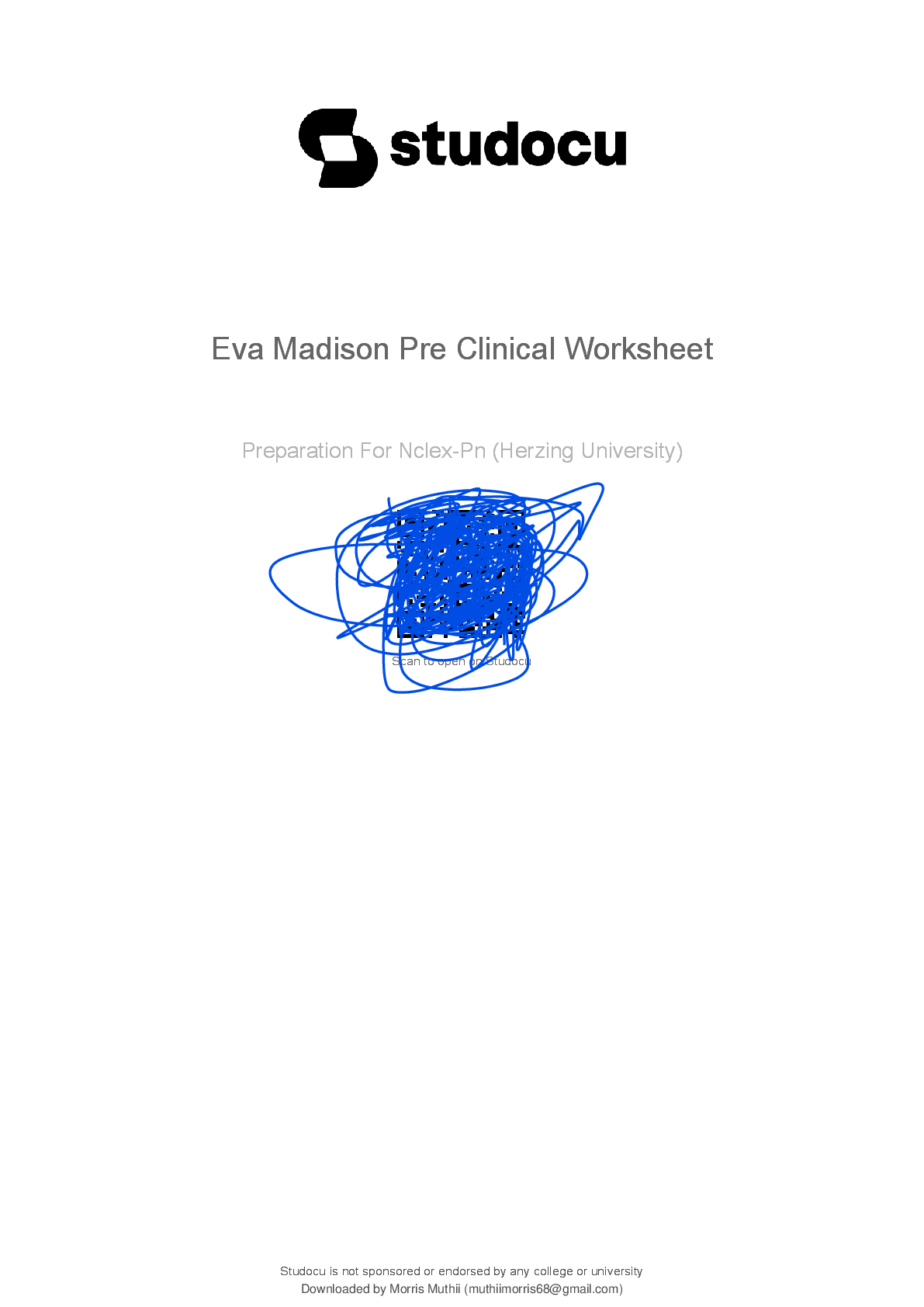
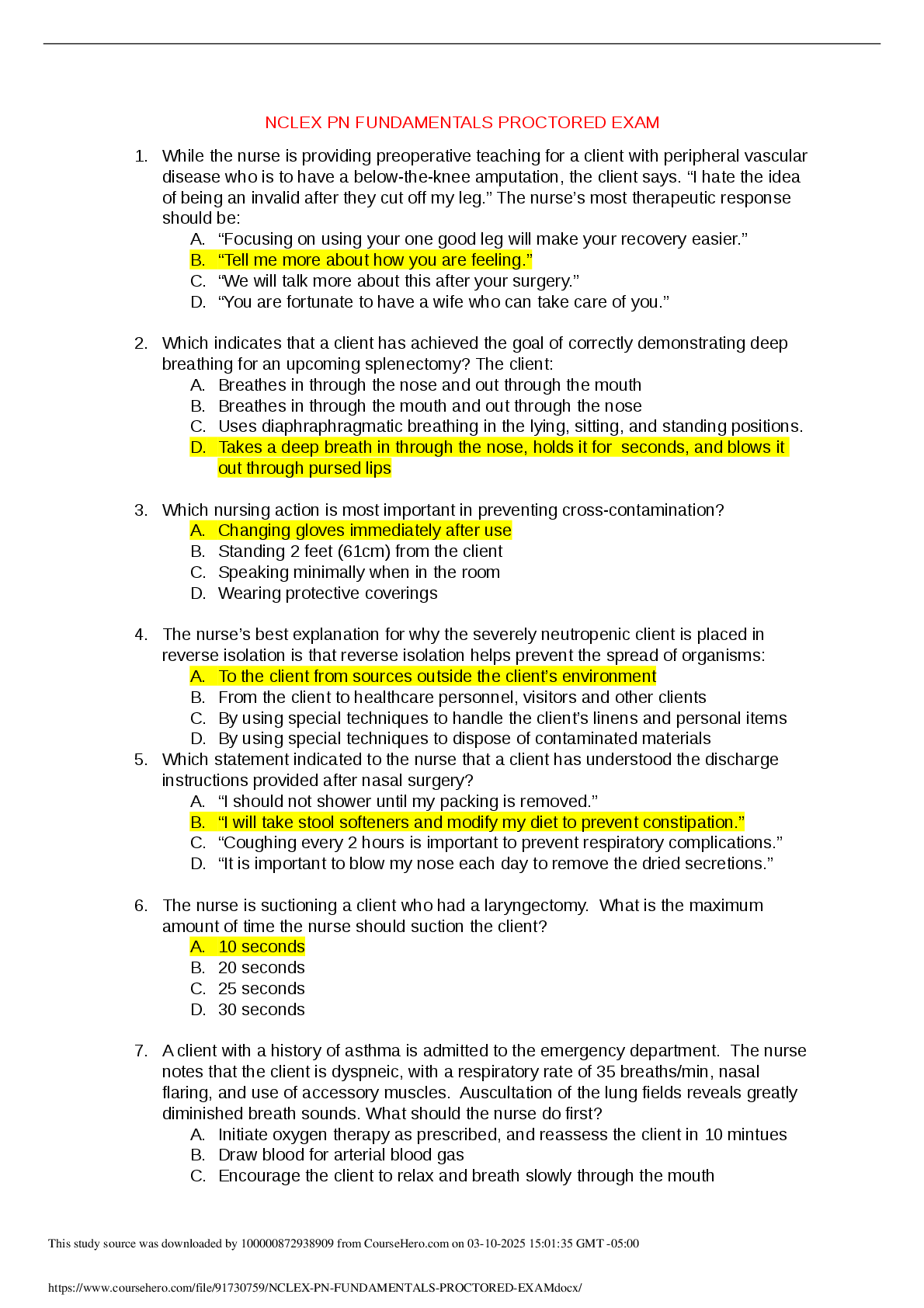
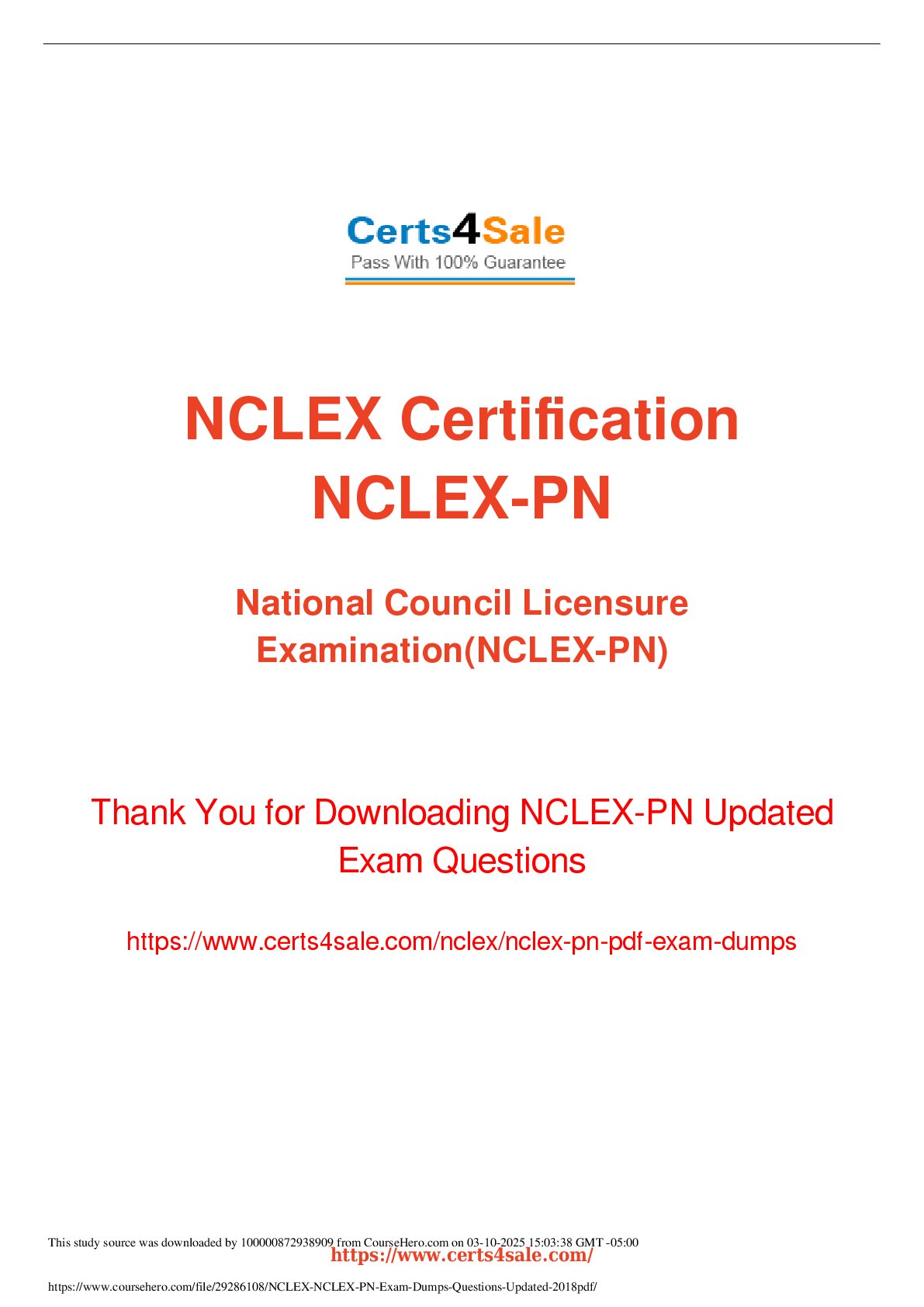
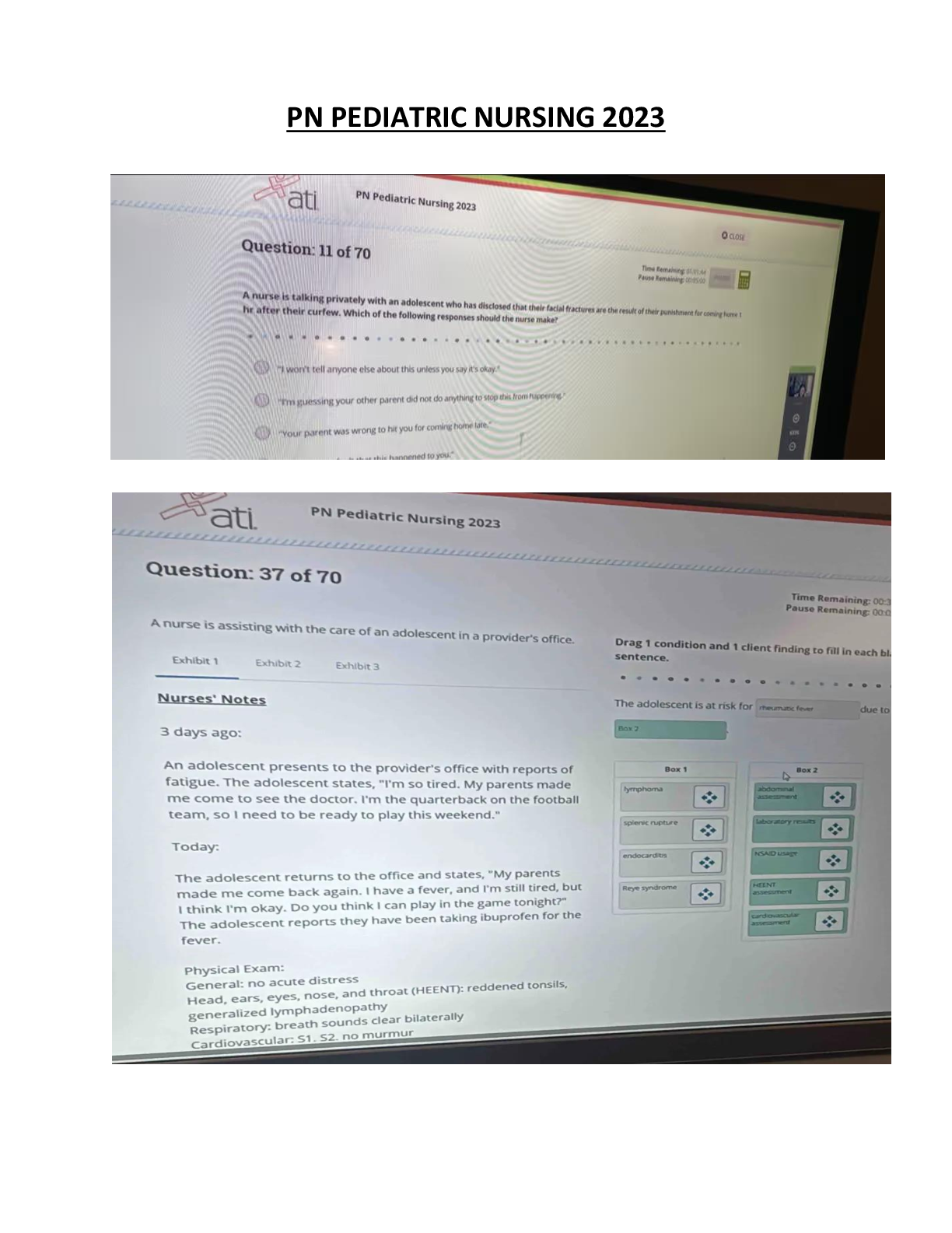
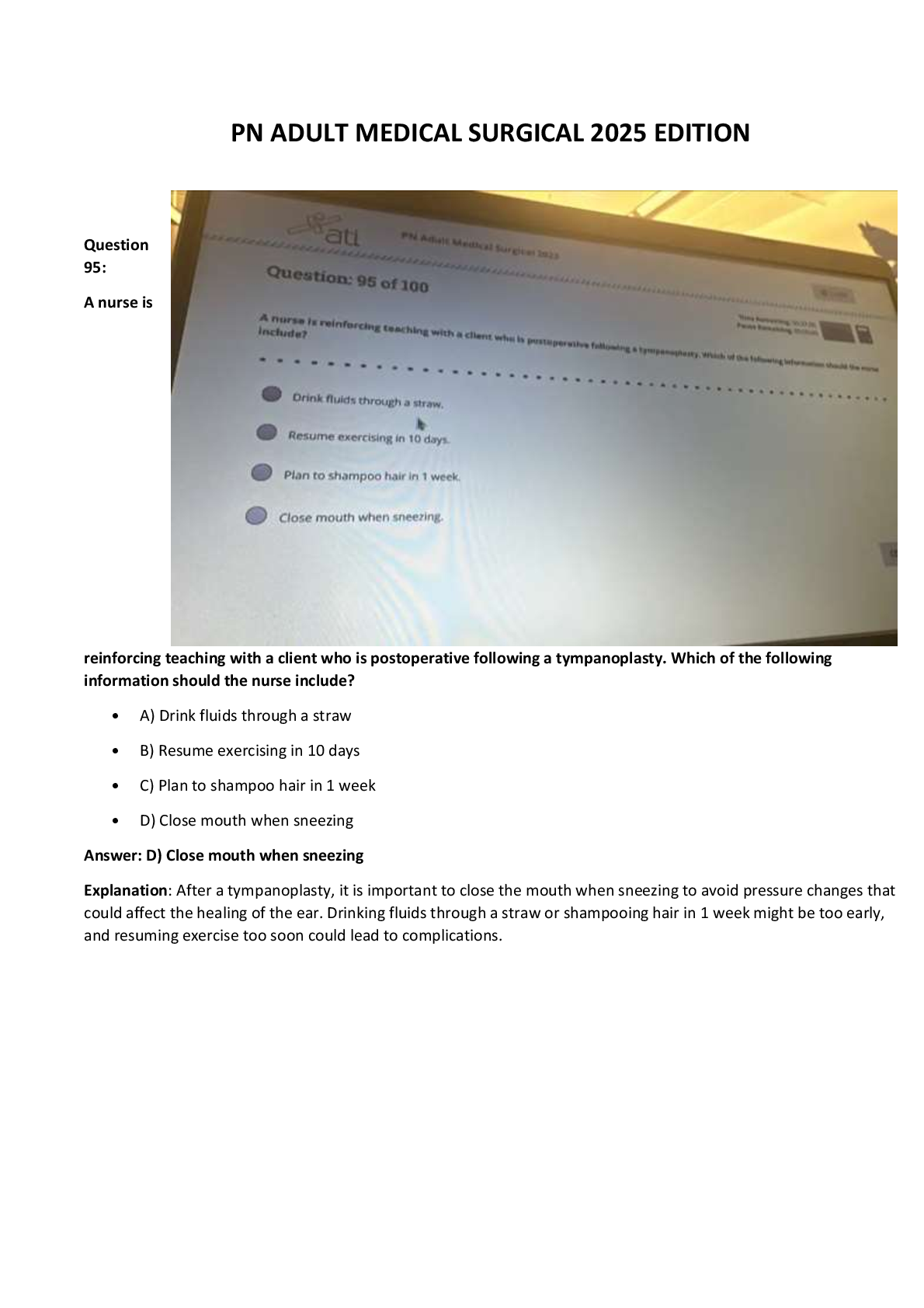
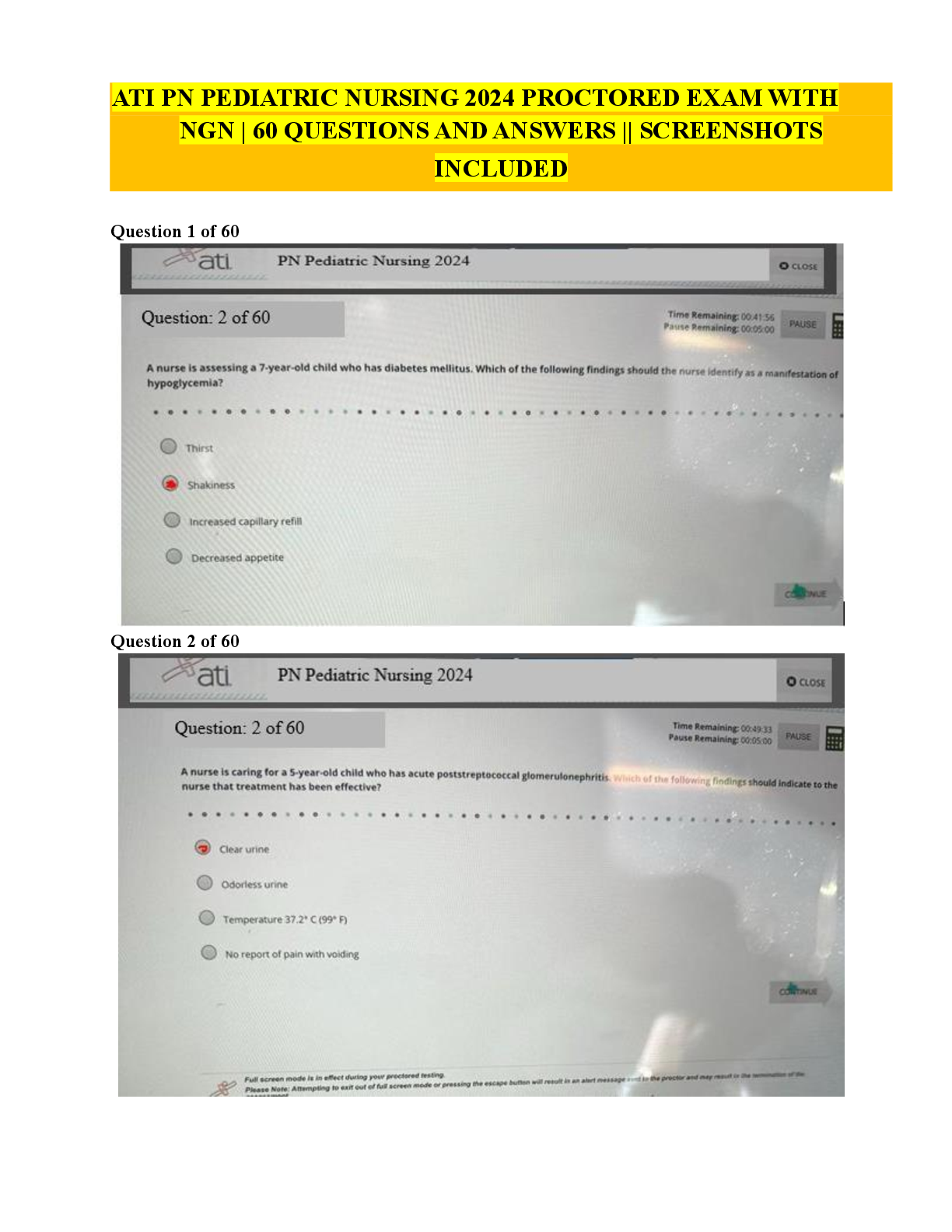




 2ND EDITION JUDITH C.png)
 2ND EDITION JUDITH C.png)
.png)
 5th Edition.png)

